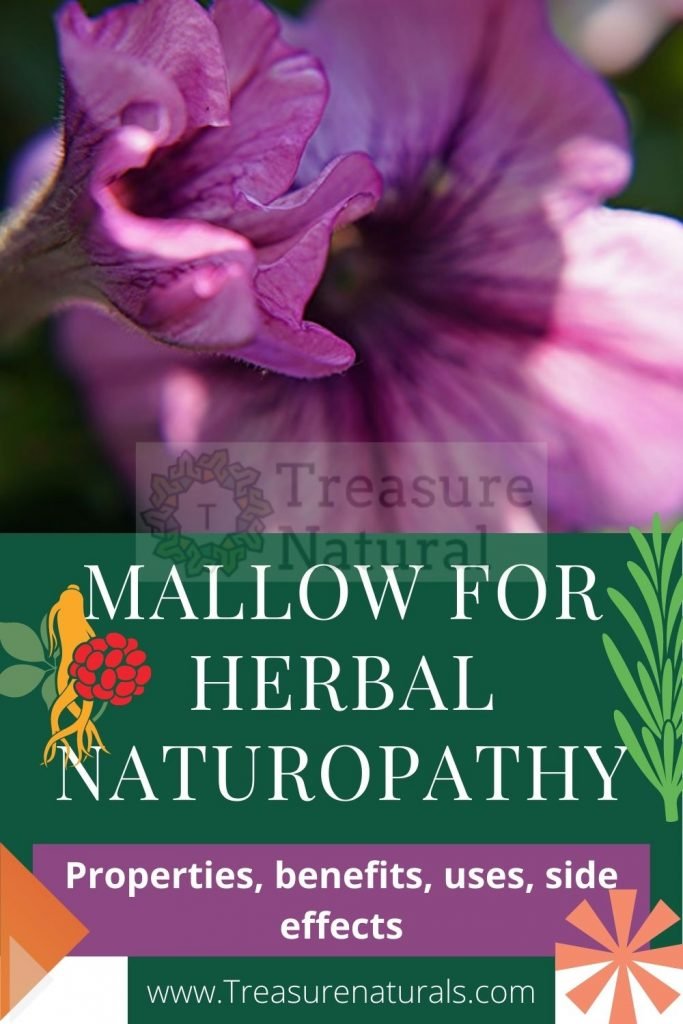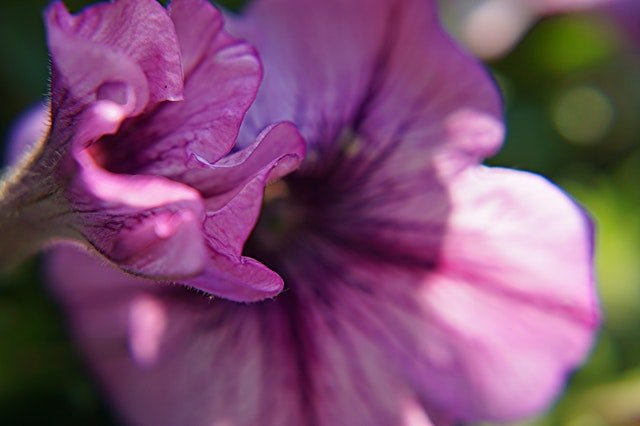
Mallow is a plant with anti-inflammatory and emollient properties, precious for intestines, throat and skin. Find out how and when to use mallow for indoor or outdoor use.
Mallow is a plant rich in mucilage with emollient and soothing properties useful in case of cough and sore throat, gastrointestinal problems and skin irritations.
Mallow (Malva sylvestris) is a plant belonging to the Malvaceae family very common in all regions with a temperate climate.
Thanks to its emollient and anti-inflammatory properties, mallow is useful against coughing, but also to regulate intestinal functions and to calm skin and mucous membrane irritations.
Properties of mallow
Mallow is a plant rich in mucilages, flavonoids, tannins, vitamins and minerals and, due to its properties, is used both as a natural remedy and as a food.
Herbal medicine uses the flowers and leaves of mallow for emollient and anti-inflammatory properties: mallow mucilages are protective on the skin and mucous membranes.
Benefits of mallow
The leaves and flowers collected in summer are used against dry cough and to relieve inflammation of the throat, pharynx and larynx.
The use of mallow is also used in case of irritation of the oral cavity (gingivitis, stomatitis, abscesses) and esophagus, gastric and duodenal ulcers and to calm bladder inflammation and vagienal irritation.
Mallow mucilages are an excellent natural remedy against intestinal inflammation, colic and mild constipation, thanks to the soothing and mildly laxative action, due to the ability of mucilages to form a sort of gel, which softens the stool and increases fecal mass, favoring its elimination. Very widespread is also the use of mallow for hemorrhoids.
Treatment of constipation with mallow is also indicated in pregnancy, children and the elderly.
How to use
Mallow can be used internally and externally in the form of an infusion to drink or to be applied topically.
Let’s see how to prepare and when to take mallow herbal tea and how to use fresh and dried mallow leaves.
Internal
use Mallow infusion is prepared by placing a handful of fresh or dried flowers and leaves in cold water, then leaving them macerated overnight to extract the mucilages present in the leaves.
Mallow herbal tea can be consumed after filtering it and possibly heating briefly.
Mallow water you can drink it several times during the day in case of cough, sore throat, constipation and irritation of the gastrointestinal tract.
External use
Mallow infusions can also be used for gargling, rinsing the oral cavity and external vagienal washes to relieve irritation of the mucous membranes.
It is also possible to make mallow compresses using cotton soaked with the infusion to be applied topically for a few minutes in case of itching, redness, irritation and dryness of the skin or against inflammation of hemorrhoids.
How to use mallow leaves
Mallow leaves, in addition to being used for therapeutic purposes in infusion and for compresses on the skin, can be consumed as food.
They can be used raw or scalded but it must be borne in mind that, being rich in mucilage, they tend to have a slightly slimy consistency.
For this reason, it is preferred to mix mallow leaves with other herbs, for example lettuce and other leafy vegetables for salads, or with dandelion, spinach, nettle in omelettes or in the fillings of savory pies and fresh pasta. Mallow leaves, due to the presence of mucilage, are perfect for thickening soups and soups.
Side effects of mallow
Mallow is a safe remedy and free of relevant side effects. Mallow can also be used during pregnancy, lactation, in children and the elderly.
Contraindications of mallow
The intake of mallow is contraindicated in case of hypersensitivity to one or more components present in the plant.
It should be taken into account that the internal use of mallow, if prolonged over time, could interfere with the absorption of drugs in the intestine, decreasing their bioavailability.
Description of the plant
Mallow is a perennial or biennial herbaceous plant, equipped with a robust root system and a little branched stem that can reach heights even greater than one meter.
The leaves are palmate and of variable size and the flowers, devoid of perfume, consist of a corolla with five petals streaked in shades of pink, lilac and purple. The fruits that develop after flowering are small, green in color that then turns brown when ripe.
All parts of the plant are edible and can be used in cooking: in addition to the leaves, the marrow of the stems is also consumed raw or cooked as a vegetable, while the flowers and unripe fruits are used raw to decorate salads and other cold dishes.
There are several types of mallow in addition to Mallow sylvestris, among which we remember:
- Mallow neglecta
- Mallow nicaeensis
that are used with the same indications.
Habitat of mallow
The mallow plant is widespread in its spontaneous state and very common in all regions with a temperate climate where it is possible to find it even in urban contexts wherever there is a lawn, garden or even a small flower bed.
Background

The emollient virtues of mallow have been known and appreciated since ancient times, in fact, its name derives from the Latin “mollire” that is “capable of softening”.
The Greeks instead called it “malàchi“, which makes the idea of “something that makes soft” (from the Greek verb “malachizomai”).
Hippocrates recommended it for its emollient and laxative properties, but it was also used as food by poor people. In fact, it is excellent in soups or boiled and seasoned with oil and salt.






